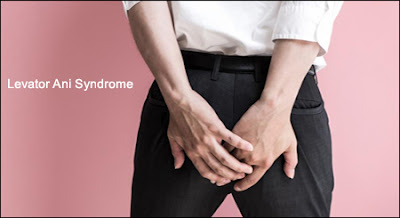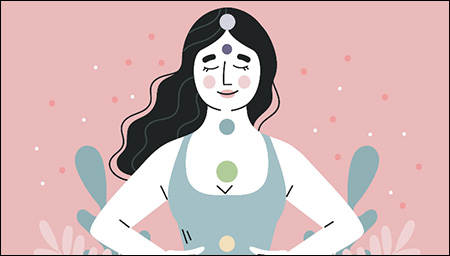ABSTRACT
Our pelvis contains viscera like the bladder, rectum, and pelvic genital organs; all these organs are surrounded and supported by the muscles of the pelvic floor. Many people suffer from pelvic floor disorders like pelvic floor disorders, urinary incontinence, fecal incontinence, hemorrhoids, constipation etc. There is a disorder which is due to the spasm of the pelvic floor muscles which is known as the levator ani syndrome. Mainly it is due to the spasm of the levator ani muscle. We will be discussing the levator ani syndrome in this article.

INTRODUCTION
Levator ani muscle is the broader muscle of the pelvic floor which attaches anteriorly to the pubic bones and posteriorly to the ischial spines and to the thickened fascia of the obturator internus muscle. It is the most important muscle of the pelvic floor as it helps in the voiding of the urine, defecation, sexual function. This occurs when the pelvic floor muscles are too tight or in the state of continuous spasm which causes discomfort in the related areas.
It is known by different names like:
- Chronic anorectal pain
- Chronic proctalgia
- Levator spasm
- Pelvic tension myalgia
- Piriformis syndrome
- Puborectalis syndrome
In ayurveda this problem can occur due to the vitiation of the vata dosha in the pelvic area. The main site of vata dosha is below the navel and the pelvic area is dominated by the vata dosha. There are 5 types of vata dosha pran vayu, udaan vayu, samaan vayu, apan vayu (sush/nidan/1/12). The vata dosha which is present in the pelvic floor is known as the apan vayu. This type of vayu is responsible for the passage of urine, feces, semen, and fetus outside the body. Vata dosha is responsible for the movement and dryness in the body, and in levator ani syndrome there is stiffness and spasm of the levator ani muscles which is due to the afflicted vata dosha in the body.
CAUSES OF THE LEVATOR ANI SYNDROME
There is not known exact cause of the levator ani syndrome, it can be associated with the following conditions
- Stopping the urge to urinate and passing stool, in ayurveda also this is known as veg dharan which aggravates the vata dosha in the pelvic area.
- This can be related to the vulvodynia
- Injury around or on the pelvic area
- Intercourse also if it is painful
- There can be chronic pelvic pain related like IBS, endometriosis or interstitial cystitis
According to Ayurveda, these conditions will aggravate the vata dosha mainly apan vayu which is in the pelvic area and will create the symptoms of levator ani syndrome.
SYMPTOMS OF THE LEVATOR ANI SYNDROME
As this is a syndrome it will cause many associated symptoms like:
- Pain - Patient may experience pain which is usually not associated with the bowel movement. It can be mild to severe, which is an on and off type.
- Urinary and bowel problems - Due to the dysfunction of levator ani muscle there is disturbed urinary and bowel problems like bloating, urge to urinate, often urgently or without being able to void urine, pain in the bladder.
- Sexual problems - This condition can cause pain in during the intercourse or after intercourse in women and painful ejaculation in men, premature ejaculation, or erectile dysfunction in men.
TREATMENT
Different approaches are there to handle this condition like
- Physiotherapy which includes massage, heat and biofeedback from a physiotherapist who is trained in pelvic floor dysfunction.
- Muscle relaxants can be used like gabapentin or pregabalin.
- Corticosteroid or botox injection on the affected area.
- Having acupuncture therapy
- Nerve stimulation therapy
- Sex therapy
HOME REMEDIES
Different home remedies can be used to have symptomatic relief from the discomfort of the levator ani syndrome
- Patients can take over the counter pain relievers
- Sitz bath in warm water can be of help
- Different exercises like deep squats, happy baby poses, leg up the wall.
AYURVEDIC TREATMENT
As this is a vaat dominated disorder, the treatments which will pacify the vata dosha will be able to treat the levator ani syndrome. Panchkarma procedures like snehan (oelation) in the form of massage, sweden (sudation), basti karma (herbal enema), basti karma is the best treatment for any disorder related to the vata dosha. Conservative treatment can be done with the help of herbs which will pacify the vata doshas. Herbs should be used in the form of ghrita or oil forms that are really effective for the vata dosha.
TREATMENT FROM PLANET AYURVEDA
Planet Ayurveda has many medications which are able to treat the vata dosha of the body. It has a wide variety of medication to treat the diseases related to the vata dosha. There is a perfect combination of medications for levator ani syndrome which are made under the pure and hygienic environment all the medications are standardized according to ayurvedic pharmacopeia which are made under the guidance of expert ayurvedic doctors. These medications are free from the fillers and preservatives.
LIST OF MEDICATIONS WHICH CAN BE USED ARE:
- Avipattikar Churna
- Yograj Guggul
- Arogyavardhini Vati
- Navkarshik Churna
- Dhanwantharam Thailam
- Ashwagandha Capsules
Herbal Remedies for Levator Ani Syndrome
PRODUCTS DESCRIPTION
1. Avipattikar Churna
This churna contains ingredients like triphala, pippali (Piper longum), sonth (Zingiber officinale), lavang (Syzygium aromaticum), Nishoth (Operculina turpethum) etc all these ingredients are very effective for the treatment of the vata dosha, mainly for the treatment of the apana vayu.
Dosage - 1 teaspoon thrice 10 mins before a meal with warm water.
2. Yograj Guggul
This contains major ingredients like gokshura (Tribulus terrestris), chitrak (Plumbago zeylanica), guggul (Commiphora mukul), rasna (Alpinia galanga) this medication will act as a very good muscle relaxant and prevents the pain related to any area in the body.
Dosage - 2 tablets twice a day with warm water after meals.
3. Arogyavardhni Vati
Main ingredients in this formulation are haritaki (Terminalia chebula), bibhitaki (Terminalia bellirica), shudh shilajit (purified asphaltum), kutki (picrorhiza kurroa), shuddha parad (purified mercury) this medication is used in wide variety of disorder and it can be used for the treatment of levator ani syndrome as this will decrease the pain and help in regular bowel movements.
Dosage - ½ tablet twice a day with plain water.
4. Navkarshik Churna
This churna is patent medication of planet ayurveda it contains ingredients like amla (Emblica officinalis), haritaki (Terminalia chebula), bahera (Terminalia bellirica), vacha (acorus calamus), manjistha (Rubia cordifolia) etc all these ingredients are helpful in the balancing vata dosha and will relieve the symptoms like muscle pain.
Dosage - 1/2 teaspoon twice a day with warm water.
5. Dhanwantharam Thailam
This oil contains ingredients like balaa (Sida cordifolia), yava (Hordeum vulgare), dashmoola (group of 10 herbs). Massage with this oil will be helpful in strengthening the pelvic muscles and reduce the vata dosha.
Usage - apply locally after warming up and then give hot fomentation over the muscular area.
6. Ashwagandha Capsules
These capsules contain extracts of the ashwagandha (Withania somnifera) which is helpful in strengthening the pelvic floor muscles and reducing the pain.
Dosage - 1 capsule twice after meals with plain water.
CONCLUSION
This is a disorder in which there is discomfort in the pelvic floor due to the spasm of the levator ani muscle. This is a really painful condition in which there symptoms like bloating, pain in the pelvic area, difficulty in voiding urine and feces. This disease is not having any treatment in modern medication; only symptomatic relief is there as this disease arises due to the aggravation of vata dosha due to various reasons in the pelvic floor; it can be treated according to that. The medications and procedures which will pacify the vata dosha in the body will be helpful in treating the condition. For more information visit www.PlanetAyurveda.com





